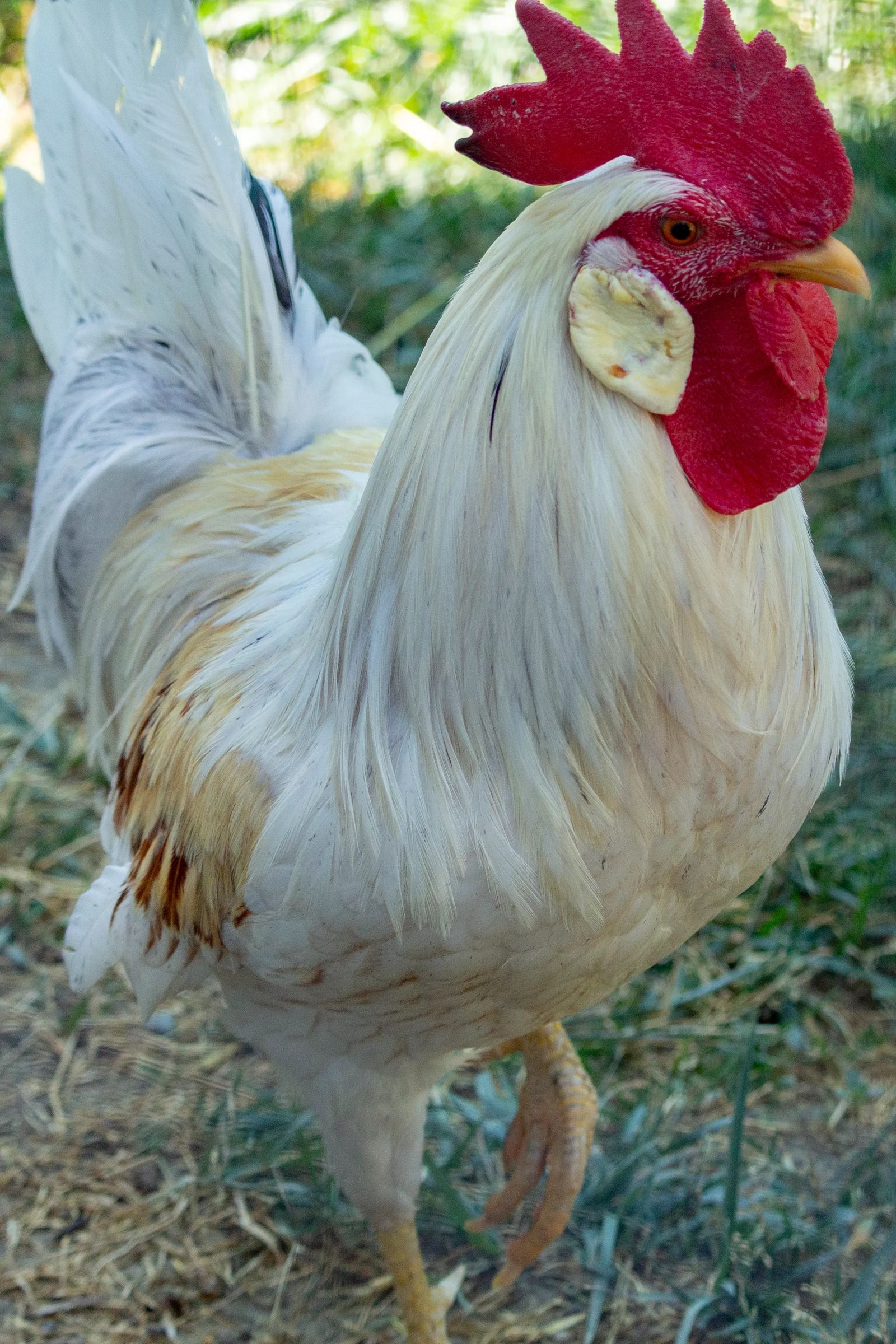
dOMESTIC cHICKEN
Gallus domesticus
Amazingly, there are nearly 25 billion chickens worldwide, making them the most populous bird. For every human on Earth, there are roughly 3.32 chickens. There are roughly 500 recognized species worldwide, all with varying feathers and body size. Males, called roosters, have a distinct comb and wattle of red flesh on the face. The wattle is often used to bring attention to the male as he dances for a hen. Roosters will also have spurs on the rear of their legs that are used as weapons. Females, called hens, are able to lay 300 eggs per year. Chickens are known to have a language, with each cluck and chirp having a different meaning. There are at least 30 known sounds that have independent meanings. Not only do chickens have an extensive language, they have color vision just like humans. Chickens have also been shown to display object permanence - or the ability to recognize that an object still exists even though it is out of view. Humans aren't able to understand this until they are 2 to 3 years old.
Click HERE for a Chicken Activity Sheet!
Our Current Residents
All chickens at ZooMontana were donated as pet surrenders.
Vixen - Female New Hampshire Red - Hatched March 2017
Vixen is a red colored hen.
Dixie - Female Golden Laced Wyandote - Hatched April 20, 2019
Dixie is a black and gold colored hen.
Nugget - Female Silver Laced Bantam - Hatched April 20, 2019
Nugget is the smallest hen at ZooMontana and has black and white feathers.
Colonel Sanders - Male California White and Brown Legbar - Hatched June 2020
Colonel Sanders is the only rooster at ZooMontana. He was donated in 2020 by ZooStaff member, Trisha.
Taxonomy
- Kingdom: Animalia
- Phylum: Chordata
- Class: Aves
- Order: Galliformes
- Family: Phasianidae
- Genus: Gallus
- Species: Gallus domesticus
Animal Facts
- Omnivore: eats both meat and plants such as lizards, insects, seeds, and grain
- Population: stable
- Diurnal: active during the day














































